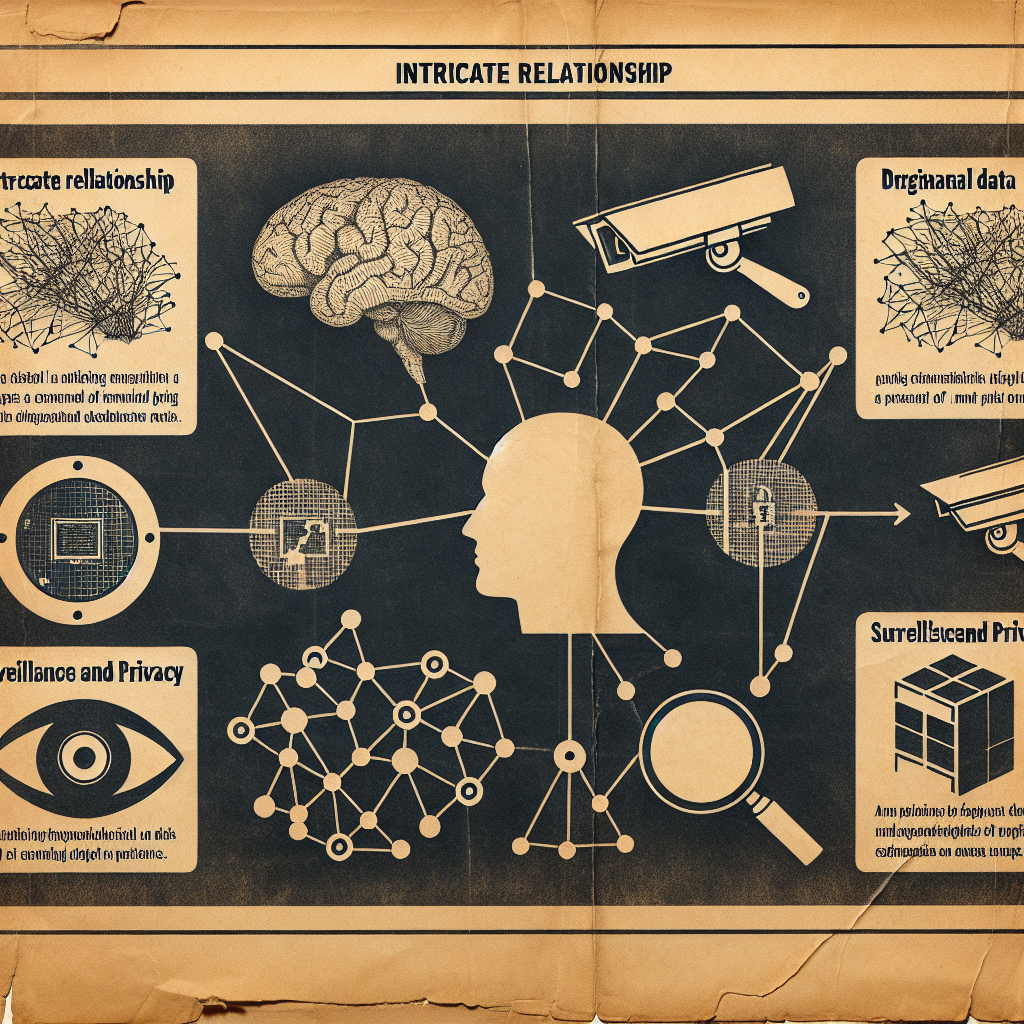In today’s rapidly advancing technological era, the integration of artificial intelligence (AI) has become increasingly prevalent. However, as AI finds its way into various aspects of our lives, one pressing concern arises: privacy. The question on everyone’s mind is, how does AI impact privacy? This article aims to explore the intricate relationship between AI and privacy, shedding light on the potential implications of AI technology and offering insights into how individuals can navigate this digital landscape to protect their personal information.
The Basics of AI
Definition of AI
Artificial Intelligence (AI) refers to the development of computer systems that can perform tasks that would typically require human intelligence, such as recognizing patterns, making decisions, and learning from experiences. It involves the simulation of human-like intelligence in machines, enabling them to understand, reason, and take appropriate actions.
Types of AI
There are two main types of AI: Narrow AI and General AI. Narrow AI, also known as Weak AI, is designed to perform specific tasks within a limited range of capabilities. Examples of narrow AI include voice assistants, recommendation systems, and image recognition algorithms. On the other hand, General AI, also known as Strong AI or Artificial General Intelligence (AGI), refers to AI systems that possess the ability to perform any intellectual task that a human being can do. However, General AI is still largely hypothetical and does not currently exist in practical applications.
Current Applications of AI
AI is being increasingly integrated into various aspects of our lives. From virtual assistants like Siri and Alexa to advanced computer vision systems used in autonomous vehicles, AI has become an integral part of many industries. AI is used in healthcare to analyze medical images, in finance to detect fraud, in manufacturing for process automation, and in marketing for personalized recommendations. The current applications of AI are vast and continually expanding, making it an incredibly influential technology in today’s world.
Understanding Privacy
Definition of Privacy
Privacy refers to the ability of individuals to control access to their personal information and protect themselves from unwarranted intrusion into their lives. It encompasses the right to keep personal details confidential and the freedom to control how information is shared and used by others. Privacy is a fundamental human right that ensures individuals have autonomy and preserves their dignity in a digital age.
Importance of Privacy
Privacy is crucial for maintaining trust and building strong relationships between individuals, organizations, and the society as a whole. It allows individuals to express themselves freely, without fear of surveillance or judgment. Privacy is essential for protecting sensitive information, such as financial records, health data, and personal communications. Without privacy, individuals may experience identity theft, discrimination, and manipulation of their personal information.
Legal Framework for Privacy
Privacy laws and regulations vary across different jurisdictions, with some countries having comprehensive legislation to protect individuals’ privacy rights. These laws often govern how organizations collect, use, and store personal information. For instance, the General Data Protection Regulation (GDPR) in the European Union provides individuals with greater control over their data and imposes strict obligations on organizations handling personal information. Similarly, the California Consumer Privacy Act (CCPA) gives California residents certain rights concerning the collection and use of their personal data. These legal frameworks play a crucial role in safeguarding privacy rights in an increasingly digital world.

AI and Data Collection
Data Collection Methods
Data collection refers to the process of gathering and storing information for analysis and use. There are various methods of data collection, including surveys, interviews, observations, and tracking digital activities. Surveys involve collecting data through questionnaires or interviews, allowing researchers to gather insights and opinions from individuals. Interviews involve direct interactions with individuals to collect more in-depth and qualitative information. Observations involve systematically watching and recording behaviors, events, or activities in real-time. Lastly, tracking digital activities involves monitoring and recording online behaviors, such as website visits, clicks, and search history.
AI’s Role in Data Collection
AI plays a significant role in data collection by automating and enhancing the process through advanced analytics and machine learning techniques. AI algorithms can analyze large volumes of data quickly and accurately, identifying patterns, trends, and correlations that may not be easily recognizable to humans. AI-powered data collection tools can also automate the collection process, reducing manual effort and providing real-time insights. For example, AI-powered chatbots can collect customer data through conversational interactions, allowing organizations to gather information efficiently and personalize their services.
Potential Privacy Concerns
While AI-powered data collection offers benefits, there are potential privacy concerns that need attention. The collection of personal data through AI systems raises questions about user consent, purpose limitation, and data minimization. Users may not always be fully aware of the data being collected and how it will be used, potentially resulting in unauthorized access or misuse of personal information. Moreover, there is also the risk of algorithmic bias, where AI systems may inadvertently discriminate against certain groups or individuals due to biases present in the collected data. It is essential to address these concerns and ensure that data collection practices align with ethical and privacy standards.
AI and Data Storage
Data Storage and AI
Data storage refers to the process of preserving digital information for future use. With the increasing volume of data generated by AI systems, efficient storage and management of data are crucial. AI systems require access to vast amounts of data to train their algorithms and improve their capabilities over time. This necessitates robust data storage infrastructure and effective data management practices to ensure data availability and accessibility.
Cloud Computing
Cloud computing has emerged as a popular solution for data storage in the AI era. Cloud platforms provide scalable and flexible storage options that can accommodate the growing needs of AI applications. Cloud services offer on-demand storage resources, allowing organizations to store and retrieve data as needed. This eliminates the need for extensive on-premises storage infrastructure and provides cost-effective storage solutions. Cloud computing also enables collaboration and data sharing among multiple users, making it convenient for AI development and deployment.
Security of Stored Data
The security of stored data is a critical concern when it comes to AI and data storage. With large amounts of data being stored in cloud-based environments, there is a need for robust security measures to protect against unauthorized access, data breaches, and other cyber threats. Encryption techniques can be used to secure data at rest and in transit, ensuring that sensitive information remains protected. Additionally, access controls and multi-factor authentication mechanisms can restrict unauthorized access to stored data. Regular security audits and updates are also necessary to address emerging threats and vulnerabilities, providing a secure environment for stored data.

AI and Data Analysis
Data Analysis Techniques
Data analysis involves the examination, transformation, and interpretation of raw data to uncover meaningful insights and make informed decisions. Various techniques are used for data analysis, including statistical analysis, machine learning algorithms, data mining, and natural language processing. Statistical analysis involves applying statistical models and methods to analyze and interpret data, enabling researchers to draw valid conclusions. Machine learning algorithms leverage patterns in data to uncover relationships and make predictions or classifications. Data mining techniques are used to discover patterns and relationships within large datasets, identifying trends or anomalies. Natural language processing enables the analysis of textual data, allowing AI systems to understand and make sense of human language.
AI’s Role in Data Analysis
AI plays a pivotal role in data analysis by enabling advanced analytics techniques that can handle large and complex datasets. AI algorithms, such as deep learning neural networks, can automatically extract features and patterns from data, identifying correlations and making predictions with high accuracy. AI-powered data analysis tools can automate repetitive tasks, freeing up human analysts to focus on higher-level tasks. Additionally, AI systems can continuously learn and improve their analysis capabilities over time, adapting to changing data and uncovering insights that may be challenging for humans to discover.
Privacy Risks in Data Analysis
Data analysis, particularly when performed by AI systems, poses certain privacy risks. The analysis of personal data may reveal sensitive information or patterns that can be linked back to individuals, compromising their privacy. There is a constant tension between the desire to extract useful information from data and the need to protect individual privacy. Privacy-preserving techniques, such as data anonymization or differential privacy, can be employed to mitigate these risks. Ensuring data is anonymized or aggregated before analysis, and implementing strict access controls can help to safeguard privacy while still enabling valuable data insights.
AI and Information Sharing
Information Sharing Practices
Information sharing refers to the act of exchanging or disseminating data or knowledge between individuals, organizations, or systems. In today’s interconnected world, information sharing has become increasingly prevalent, facilitating collaboration, innovation, and decision-making. Organizations share information internally with employees and externally with partners, customers, and the public, enabling efficient operations and enhancing transparency. Information sharing practices encompass various methods, including email, messaging platforms, file-sharing systems, and collaboration tools.
AI’s Impact on Information Sharing
AI has had a significant impact on information sharing, making it faster, more efficient, and personalized. AI-powered recommendation systems analyze user preferences and behavior, suggesting relevant content or products. This enhances information sharing by providing individuals with tailored and targeted information. AI chatbots facilitate real-time information exchange, automating customer support or providing instant responses to queries. Natural language processing algorithms enable the extraction of valuable insights from unstructured textual data, improving the quality and relevance of shared information. Overall, AI enhances the effectiveness and speed of information sharing, enabling organizations and individuals to make better-informed decisions.
Ethical and Privacy Considerations
While AI enhances information sharing, there are ethical and privacy considerations that need to be addressed. The sharing of personal information has the potential to violate privacy rights, especially when individuals are not aware of how their data is shared and used. Organizations must be transparent about data sharing practices, obtain informed consent, and ensure proper security measures are in place to protect shared information. Additionally, there is a need to address the issue of algorithmic fairness and bias in information sharing. AI systems should be designed and trained to provide unbiased recommendations and avoid reinforcing existing biases or discrimination.
AI and Surveillance
Surveillance Technologies
Surveillance technologies encompass various tools and systems used to monitor and observe individuals, places, or activities. These technologies include closed-circuit television (CCTV) cameras, facial recognition systems, biometric identification tools, and tracking devices. They are commonly employed for security purposes, public safety, and law enforcement. Surveillance technologies capture and record data, allowing for real-time monitoring and retrospective analysis.
AI’s Role in Surveillance
AI has revolutionized surveillance by enhancing its capabilities and efficiency. AI-powered surveillance systems can analyze vast amounts of real-time video or sensor data, detecting anomalies, identifying individuals or objects of interest, and automatically issuing alerts. Facial recognition algorithms can match faces against watchlists, improving the accuracy and speed of identification. AI systems can also learn patterns of behavior, enabling the detection of suspicious activities or abnormal events. Furthermore, AI algorithms can analyze large datasets from multiple surveillance sources, uncovering patterns or relationships that may not be easily discernible by human operators.
Privacy Implications of AI Surveillance
The widespread use of AI-enhanced surveillance raises significant privacy concerns. Constant monitoring and the potential for misuse of surveillance data infringe upon individuals’ right to privacy, creating a potential surveillance state. Facial recognition technology can be highly invasive, as it enables the tracking and identification of individuals in real-time. This poses risks to personal freedoms and can lead to the potential for discrimination or misuse. Striking a balance between security needs and preserving privacy rights is essential, requiring robust regulations, transparency, and oversight to ensure responsible and ethical use of AI surveillance technologies.
AI and User Profiling
User Profiling Methods
User profiling refers to the process of creating profiles of individuals based on their behavior, preferences, and characteristics. User profiling methods involve collecting and analyzing data about individuals’ activities, such as browsing history, purchase behavior, social media interactions, and demographic information. These methods may employ various techniques, including machine learning algorithms, clustering, and behavioral analysis. By profiling users, organizations can gain insights into their preferences and needs, enabling more targeted marketing strategies and personalized experiences.
AI’s Role in User Profiling
AI plays a crucial role in user profiling by automating and improving the process of analyzing large amounts of user data. AI algorithms can identify patterns and correlations in user behavior, categorize individuals into segments, and predict future actions or preferences. AI can extract valuable insights from diverse datasets, enabling organizations to create comprehensive profiles of users with a high degree of accuracy. AI systems can continually learn and adapt as new data becomes available, refining user profiles and ensuring personalized experiences.
Privacy Concerns with User Profiling
User profiling raises significant privacy concerns, as it involves the collection and analysis of personal data without individuals’ explicit consent or awareness. Profiling individuals based on their online activities can reveal intimate details about their lives, preferences, and beliefs. The use of AI in user profiling raises additional concerns, as AI algorithms may uncover patterns or make inferences that individuals may not expect or appreciate. Organizations must be transparent about their profiling practices, inform users about the data being collected and how it will be used, and provide individuals with control over their data and the option to opt-out if desired. Privacy regulations and guidelines can help to ensure that user profiling is conducted responsibly and in compliance with privacy rights.
AI and Automated Decision Making
Automated Decision Making Process
Automated decision making refers to the use of AI systems or algorithms to make decisions or predictions without direct human involvement. The process typically involves the collection and analysis of data, followed by the application of predefined rules or machine learning algorithms to generate decisions or recommendations. Examples of automated decision making include credit scoring, loan approvals, job candidate screening, and customer segmentation. Automated decision making aims to improve efficiency, consistency, and accuracy while reducing human bias and subjectivity.
AI’s Impact on Automated Decision Making
AI has a profound impact on automated decision making by enabling more sophisticated and accurate algorithms. Machine learning algorithms can learn from vast amounts of data, improving decision-making capabilities and identifying patterns that humans may overlook. AI systems can process information faster, handle complex datasets, and make predictions or classifications with high accuracy. As AI continues to advance, automated decision making is becoming more prevalent, enhancing various industries such as finance, healthcare, and logistics.
Privacy and Fairness in Automated Decision Making
While automated decision making offers benefits, there are concerns regarding privacy and fairness. Automated decisions are based on algorithms that learn from historical data, which may contain biases or discriminatory patterns. Unchecked, these biases can perpetuate unfairness or discrimination, impacting certain groups disproportionately. Privacy concerns arise when automated decisions involve personal data that individuals may not be aware of or able to contest. To address these concerns, organizations must ensure transparency in the decision-making process, provide explanations of decisions to individuals, and implement fairness and non-discrimination practices. Regular auditing and monitoring of automated systems can identify and rectify biases, ensuring that automated decisions uphold ethical and privacy standards.
The Future of AI and Privacy
Emerging Trends
The future of AI and privacy holds numerous exciting possibilities and challenges. Emerging trends suggest that AI will continue to become more integrated into various aspects of our lives, from smart homes and wearable devices to autonomous vehicles and personalized healthcare. AI will further enhance data collection, analysis, and decision-making capabilities, revolutionizing industries and improving efficiency and convenience. However, as AI evolves and becomes more sophisticated, the ethical and privacy considerations associated with its use will become even more critical.
Regulatory Measures
To address the privacy concerns associated with AI, regulatory measures will likely be implemented. Governments and regulatory bodies are already recognizing the importance of privacy and data protection in the AI era. Stricter data protection laws and regulations are being introduced to ensure that individuals’ privacy rights are upheld, and organizations are held accountable for their AI practices. Heightened transparency requirements and increased user consent control are expected to be key components of future privacy regulations surrounding AI.
Balancing AI Advancements with Privacy
As AI advancements continue, it is crucial to strike a balance between the benefits of AI and the protection of privacy rights. Organizations must adopt privacy-by-design principles, ensuring that privacy considerations are integrated into the development and implementation of AI systems. Technologies such as federated learning, differential privacy, and secure multiparty computation can be used to preserve privacy while still enabling AI-driven innovation. Open discussions and collaborations between stakeholders, including policymakers, researchers, and industry experts, will play a vital role in shaping the future of AI and privacy, ensuring that technological advancements are accompanied by robust privacy safeguards.
In conclusion, AI has a significant impact on privacy, both positive and negative. While AI brings numerous benefits in terms of efficiency, personalization, and decision-making, it also raises significant privacy concerns. The responsible development and use of AI require addressing these concerns and ensuring that privacy is protected throughout the AI lifecycle. By understanding the basics of AI, the importance of privacy, and the potential privacy risks associated with AI, we can navigate the evolving landscape of AI and privacy responsibly and ethically. Striking a balance between AI advancements and privacy protection is crucial to create a future where AI enhances our lives while respecting our fundamental right to privacy.
